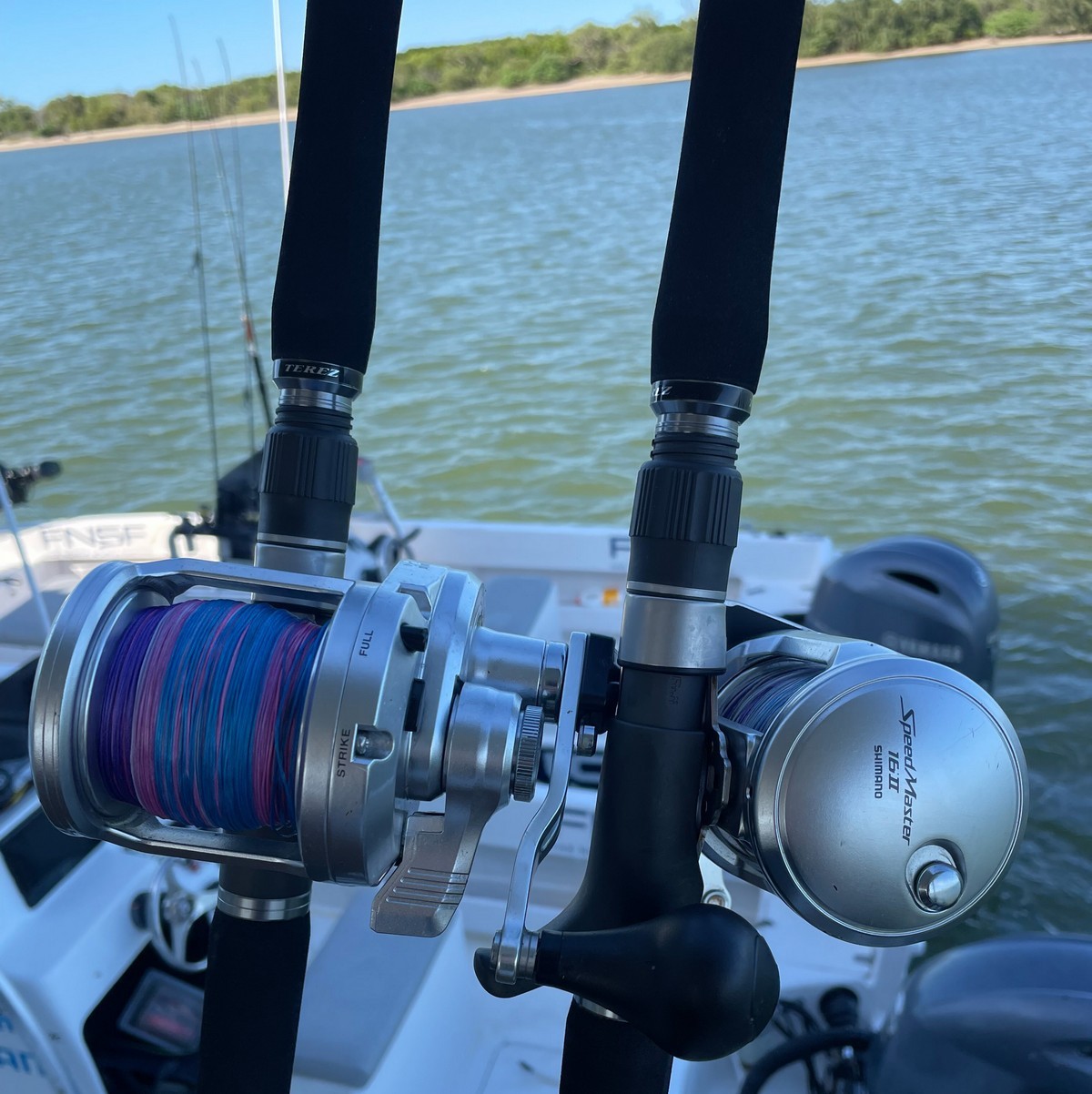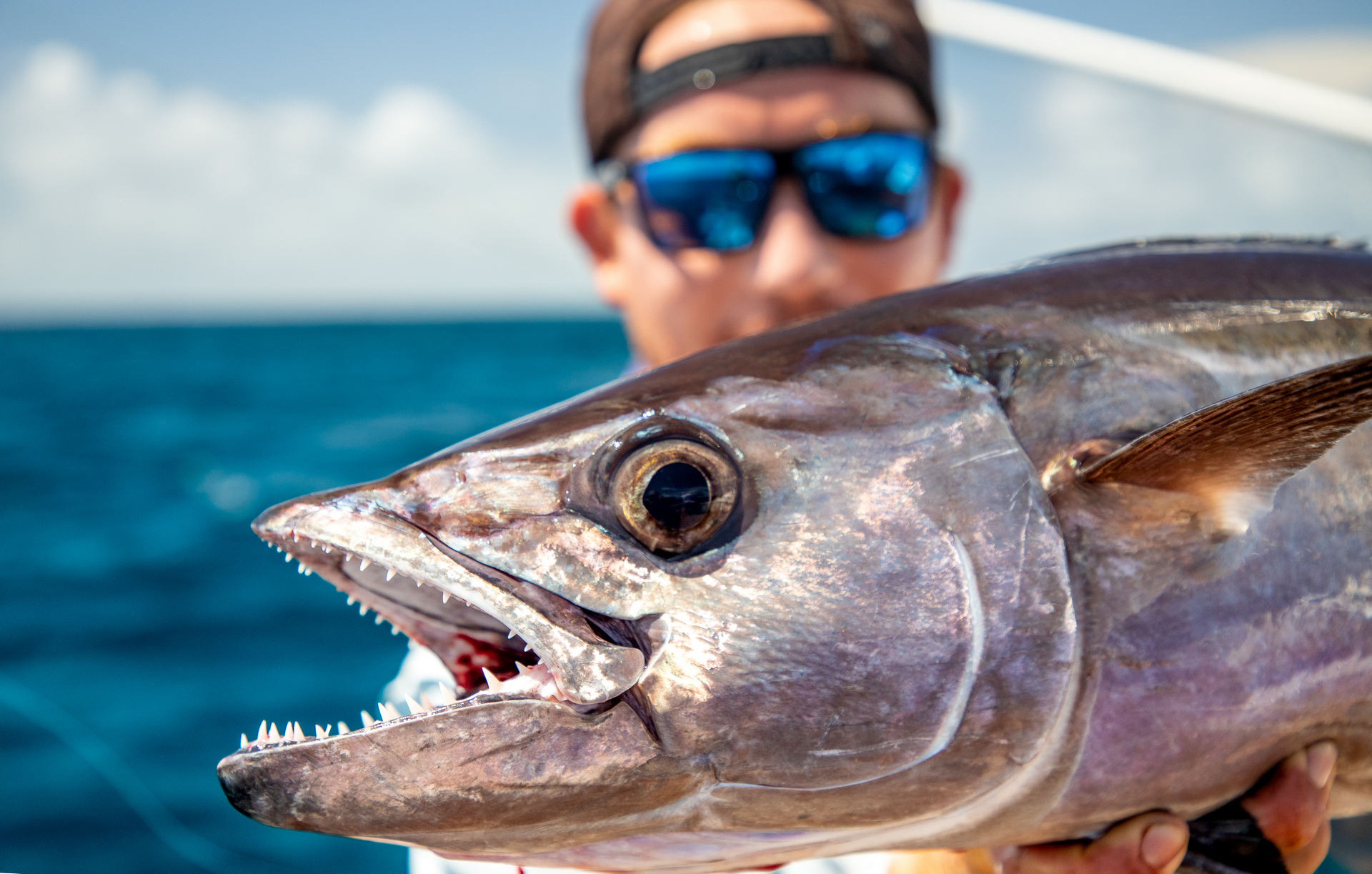INTRODUCTION TO DEEP JIGGING
Deep jigging techniques in blue water require good balance and refined movement to produce the best results. It is a specialised technique where a strong back and decent guns are welcome additions but in reality, anyone can give it a go.
Depths classed as deep jigging are generally 30m+ and guides at times might look to jig in anything up to 120cm. Out wider of the reef entrances, there are huge fluctuations in depth, and the close-spaced contour lines on the chart are sound evidence.
Finding deep structure and dramatic depth contour changes are key to deep jigging. Baitfish will hold up against deep pressure points, stack up in depressions, and group together on rises. Find the bait, find the lumps, find the fish.
Heavier metal jigs are needed in these situations and after reaching the bottom, the idea is to rip them back up again in short, sharp lifts of the rod. Huge variations exist in the retrieves employed and different fish will respond to different speed, flutter and twitch of your chosen jig.
TARGETED FISH SPECIES
We target mostly larger pelagic fish when deep jigging including the Spanish Mackerel and Dogtooth Tuna. But many other species will at times be encountered such as Coral Trout, Rosy Jobfish, Green Jobfish, Chinaman fish, Maori Wrasse, Cattle Dog Cod and Red Bass.
TYPICAL LOCATIONS
At FNSF-NOMAD, we often jig deeper water around the passages and reef edges adjacent to the shelf. This is true along most outer reef sections anywhere north of Lizard Island. Any of the east coast FNSF-NOMAD trips will provide opportunities to deep jig where the outer reef is accessed.
OUR TACKLE
FNSF-NOMAD use top of the line Shimano rods, reels and terminal tackle. We provide the following setup for deep jigging:
Reel: Shimano Speedmaster 16 Lever Drag 2
Rod: Shimano Terez Overhead Jig 58 Heavy 5' 8
Line: 80lb braid; 120-150lb leader
OUR RECOMMENDED LURES
Our guides are experienced in using a wide variety of lures and recommend the following when it comes to deep jigging:
- Streaker Jig 120g, 200g, 320g
- Ridgeback Jig 200g
- Gypsy Jig 200g
- Squidtrex Jig 130g, 150g
These lures are available to purchase as part of our discounted pre-purchase lure packs in your own personal lure wrap, and can also be puchased on board.




